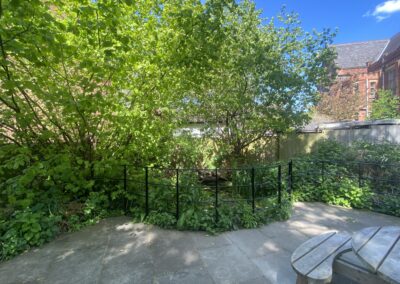Bug Hotel
Bug Hotel

A large bug hotel serves as a crucial habitat for a diverse array of insects and arachnids. Among the key inhabitants are solitary bees, such as the red mason bee and the leafcutter bee. These bees, unlike their hive-dwelling counterparts, live alone but play a significant role in pollination. They typically nest in hollow reeds or drilled logs, contributing to the health and productivity of local plant life.
Spiders, including garden spiders and orb-weavers, are also common residents. These arachnids build webs to capture insects, helping to control pest populations naturally. Their presence is vital for maintaining ecological balance within the garden.
Woodlice and beetles find shelter in the moist, decaying wood of the bug hotel. These decomposers break down organic matter, enriching the soil with essential nutrients. This process supports plant growth and maintains soil health.
Ladybirds and lacewings, known for their appetite for aphids and other small pests, frequently inhabit bug hotels as well. These insects provide natural pest control, protecting plants from infestations. Earwigs, which feed on decaying plant material and small insects, also take advantage of the bug hotel’s sheltered spaces.
Bug hotels are beneficial for several ecological reasons. They promote biodiversity by offering a habitat for a variety of insects, which in turn supports healthier ecosystems. Increased biodiversity enhances pollination, natural pest control, and soil fertility.
From a sustainability perspective, bug hotels utilize natural materials like wood, straw, and leaves, which might otherwise be discarded. This not only creates a habitat for insects but also reduces garden waste. Additionally, fostering insect diversity helps gardens become more resilient to pests and diseases, decreasing the need for chemical interventions.
Overall, bug hotels are an effective tool for enhancing ecological diversity and sustainability. They provide critical support for a variety of beneficial insects, contributing to a balanced and resilient ecosystem. By incorporating bug hotels into gardens, we can promote environmental health and sustainability at a local level.









